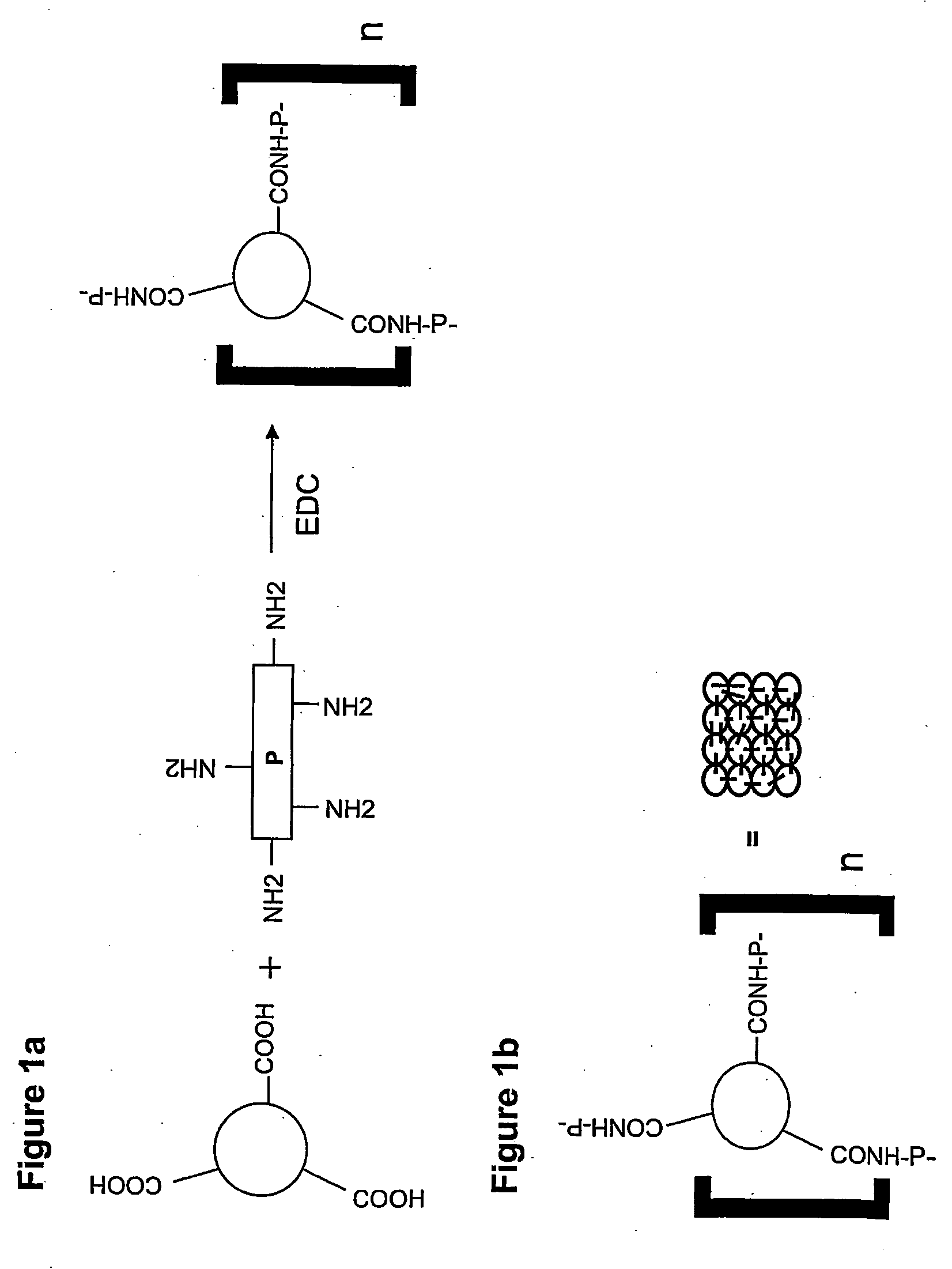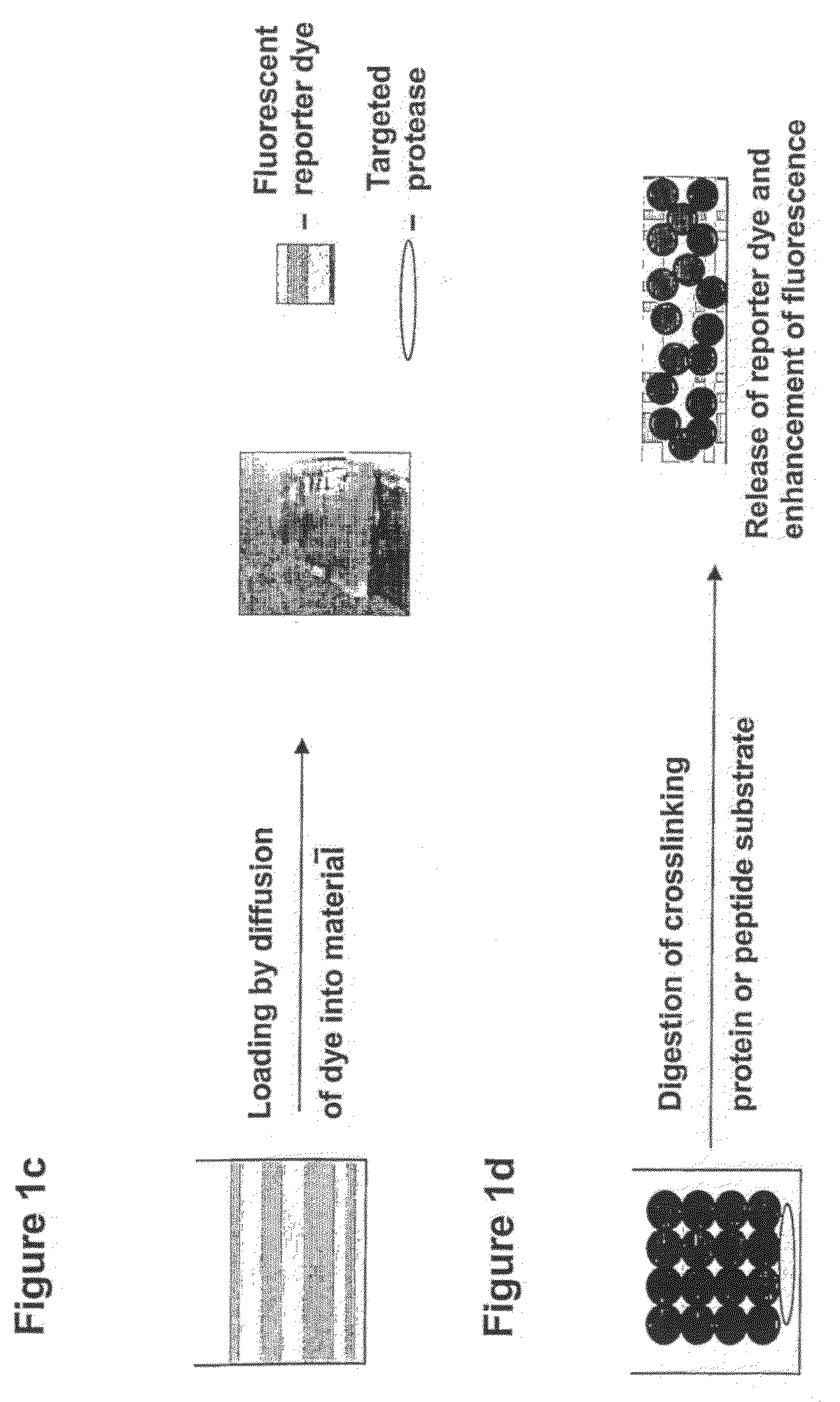Method of Enhancing a Fluorescent Signal
a fluorescent signal and fluorescent technology, applied in the direction of material testing goods, biochemistry apparatus and processes, instruments, etc., can solve the problems of affecting the detection effect of the molecule of interest, etc., to achieve the effect of enhancing the fluorescent signal
- Summary
- Abstract
- Description
- Claims
- Application Information
AI Technical Summary
Benefits of technology
Problems solved by technology
Method used
Image
Examples
example 1
Generation of Hydrogel Particles
[0126]Temperature sensitive submicron sized hydrogel particles, comprising pNIPAM and copolymer (pNIPAM-HEA and pNIPAM-AA), used in this study were synthesised essentially as described in US Patent Application 20040018160 (Hu et al) with a minor modification. Instead of potassium persulfate, ammonium persulfate was used. The percentage of acrylic acid by weight in the total monomer mixture, including NIPAM, was approximately 2.8%. The concentration of pNIPAM-AA (0.0128 g / ml) and pNIPAM-HEA (0.041 g / ml) particles in water were determined by measuring their freeze dried weight.
[0127]Solutions of pNIPAM copolymer particles using PBS as the solvent (rather than water), were generated by freeze drying solutions of pNIPAM in water and then resuspending the dry particles in water and 10×PBS, such that the concentration of pNIPAM copolymer particles in PBS was identical to that in the original water suspension.
[0128]FIGS. 2a and 2b show a graph of the particl...
example 2
Generation of Hydrogel Material
[0129]Hydrogel material was synthesised from bovine serum albumin (BSA) and pNIPAM copolymer particles according to the method of Huang et al [Controlled drug release from hydrogel nanoparticle networks. J Control Release 94:303-311 (2004); US Patent Appln 20030138490], with some modifications. Briefly, 800 μl of pNIPAM-AA in water was lyophilised and re-suspended in 400 μl water. Then, 40 μl of BSA (0.33 mg / μl) and 60 μl of 1-ethyl-3-(3-dimethylaminopropyl)-carbodiimide(EDC) (10% weight / volume) were added to the particles and mixed rapidly with a pipette. The mixture was incubated overnight at room temperature to allow cross-linking to proceed to completion.
example 3
Turbidity of Hydrogel Particle Solution in Relation to Temperature
[0130]The turbidity of pNIPAM-HEA particles suspended in water or 1×PBS was assessed at different temperatures. Turbidity was assessed by measuring changes in the transmission of a 500 nm wavelength of light through the suspension [see method of Gao & Hu (2002) Langmuir 18:1360-1367]. Transmittance was measured using a Versamax (Molecular Dynamic, CA) UV-Vis Spectrometer with temperature control, at temperatures from 20° C. to 45° C. The results of these experiments are presented in FIG. 3.
[0131]The abrupt increase in the turbidity of the suspensions indicates that the LCST has been reached and the hydrogel particles have become hydrophobic, leading to a phase separation.
PUM
| Property | Measurement | Unit |
|---|---|---|
| LCST | aaaaa | aaaaa |
| wavelengths | aaaaa | aaaaa |
| wavelengths | aaaaa | aaaaa |
Abstract
Description
Claims
Application Information
 Login to View More
Login to View More - R&D
- Intellectual Property
- Life Sciences
- Materials
- Tech Scout
- Unparalleled Data Quality
- Higher Quality Content
- 60% Fewer Hallucinations
Browse by: Latest US Patents, China's latest patents, Technical Efficacy Thesaurus, Application Domain, Technology Topic, Popular Technical Reports.
© 2025 PatSnap. All rights reserved.Legal|Privacy policy|Modern Slavery Act Transparency Statement|Sitemap|About US| Contact US: help@patsnap.com



